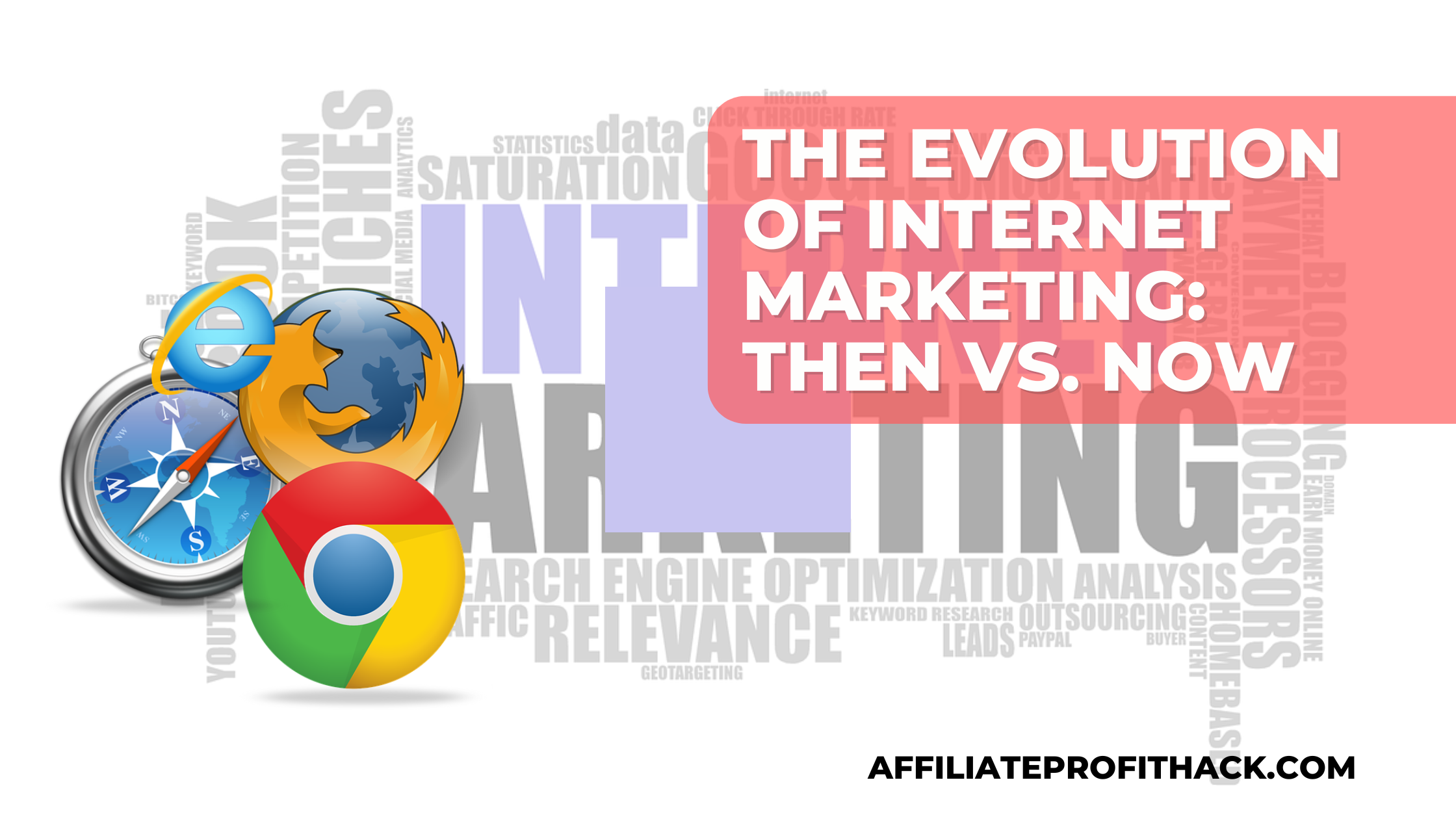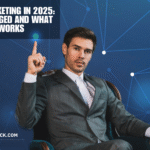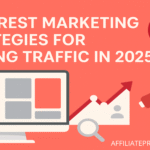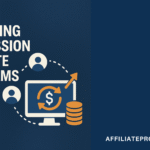Welcome to my article “The Evolution of Internet Marketing: Then vs. Now”.
Remember the early days of the internet when your modem screeched like a haunted robot just to connect to the web? Back then, internet marketing was about as sophisticated as those clunky banner ads flashing “Click Here!” in neon colors. Fast forward to today, and it feels like marketers can predict your latte order before you even wake up. The journey from then to now in the world of internet marketing has been nothing short of extraordinary—and occasionally, downright hilarious.
Today, internet marketing is a polished, hyper-targeted machine. It’s all about meeting customers where they are—on their phones, in their inboxes, or scrolling through social media at 2 a.m. But how did we get here? What lessons can we learn from the quirky, awkward beginnings of digital marketing? In this blog, we’ll take a nostalgic walk down memory lane, compare it to the sleek strategies of today, and explore the key innovations that brought us here. And don’t worry, we’ll sprinkle in a bit of humor to keep the flashbacks bearable.
My Best Recommended & Proven Way to Make $100-$300 Daily – Watch This FREE Video to START >>>

The Early Days of Internet Marketing
The good old days of the internet—a simpler time when websites took forever to load, and the most exciting part of online life was checking if your crush responded to your AOL Instant Message. It was in this digital frontier of dial-up connections and Geocities websites that internet marketing first poked its awkward head out of the metaphorical ground.
Back in the 1990s, “internet marketing” was essentially a Wild West experiment. Marketers didn’t have data analytics, heatmaps, or even a clear idea of what worked. Their strategy? Slap a banner ad on the top of a webpage and hope someone clicked. These ads were the internet’s version of neon billboards—bright, flashy, and a little desperate. If you were online during that era, chances are you encountered one that promised you’d won a free trip to Hawaii (spoiler: you didn’t).
The tools were primitive, too. Forget sleek websites with seamless UX design—early websites looked like digital scrapbooks made by your artsy cousin. The “cutting edge” of internet marketing often involved email campaigns that weren’t much more than glorified chain letters. And let’s not forget the infamous pop-up ad, an intrusive tactic so reviled it practically forced the invention of pop-up blockers.
Despite these humble beginnings, the potential of the internet for marketing was undeniable. Brands quickly realized that they could reach a global audience at a fraction of the cost of traditional advertising. Sure, the tools were crude, but for businesses willing to experiment, the possibilities were endless.
Looking back, the early days of internet marketing feel like the internet’s awkward teenage years. It wasn’t pretty, but it set the stage for the sleek, sophisticated strategies we see today. Without those chaotic banner ads and dial-up struggles, we might never have evolved into the digital marketing wizards we are now.
The Growth Phase (2000s to Early 2010s)
The 2000s marked the internet’s coming-of-age party, and internet marketing was invited to the main table. With search engines becoming everyone’s go-to source for answers (sorry, encyclopedias), businesses realized that the key to success was being the top result for whatever people were frantically Googling at 2 a.m. Thus, the golden age of SEO was born, where keywords were king, and marketers played a never-ending game of “Guess What Google Wants.”
This era also saw the rise of pay-per-click (PPC) advertising, a revolutionary concept at the time. Instead of shouting into the void with banner ads, businesses could now pay only when someone clicked. It was a game-changer—and also the beginning of marketers obsessing over CPCs, CTRs, and other acronyms that sound suspiciously like tech jargon but are really just measures of how often people click on cat videos instead of your ad.
My Best Recommended & Proven Way to Make $100-$300 Daily – Watch This FREE Video to START >>>
Social media entered the scene like the cool kid who knows all the trends before they go mainstream. MySpace set the tone, but Facebook quickly stole the spotlight, teaching businesses the art of building an online community. Twitter came along with its 140-character limit (remember that?) and taught marketers how to be witty, concise, and occasionally viral. It was a brave new world where brands could talk to their audiences directly—and where Wendy’s sass and Oreo’s dunk-in-the-dark tweet would someday rule supreme.
And let’s not forget content marketing, which emerged as the quieter, more refined sibling of banner ads. Instead of shouting, “BUY THIS NOW,” brands started saying, “Here’s some genuinely helpful advice. By the way, we sell stuff.” Blogs, whitepapers, and e-books became the new tools of the trade, subtly building trust and authority.
The growth phase was all about discovery, experimentation, and figuring out how to turn the internet into a money-making machine. Sure, it wasn’t always smooth sailing—who can forget the overstuffed keyword disasters or those cringe-inducing early corporate tweets? But by the end of this era, internet marketing had matured into a powerful force, setting the stage for the hyper-personalized, data-driven strategies we see today.
The Modern Era (2010s to Present)
If the 2000s were the adolescence of internet marketing, the 2010s to today are its “I’ve got my life together” adult years—or at least that’s what it wants you to think. This era is marked by sophisticated tools, targeted strategies, and a sprinkle of “Is my phone listening to me?” paranoia. Internet marketing in the modern era doesn’t just respond to consumer behavior—it predicts it. It’s like the digital equivalent of your overly intuitive friend who knows you’re craving pizza before you’ve even opened the delivery app.
The rise of smartphones revolutionized how brands connect with their audiences. Mobile optimization became a non-negotiable, and websites that still took longer than three seconds to load were banished to the realm of irrelevance. Social media platforms, too, evolved into bustling marketing hubs. Instagram became a virtual runway for brands, LinkedIn became the go-to for B2B networking, and TikTok showed the world that a 15-second dance video could generate millions in revenue.
Meanwhile, the explosion of data analytics turned marketing into a precision science. Marketers went from guessing what their audience wanted to knowing it down to the last click, like digital mind readers. AI and machine learning further upped the game, powering chatbots that could hold entire conversations (sometimes better than actual humans) and personalizing ads so specifically that it felt like brands were speaking directly to you. Admit it—you’ve clicked on at least one ad that knew your guilty pleasures a little too well.
Video content also took center stage in the modern era. Platforms like YouTube and the short-form video craze on TikTok and Instagram Reels made dynamic, engaging storytelling the norm. Forget reading a long blog—today’s audience would rather watch a snappy, visually stunning clip with subtitles because who has time for sound anymore?
And let’s talk about influencer marketing, the undisputed king of the modern era. Why sell your product directly when you can have someone with 1.2 million followers do it for you while sipping iced coffee in a perfectly lit kitchen? From mega-celebrities to micro-influencers, the strategy proved that people trust relatable personalities over faceless brands.
The modern era of internet marketing is flashy, fast-paced, and deeply connected. It’s a time where brands need to be where their audience is—on mobile, on social, and even in their DMs. But beneath the glitz and glamour lies a truth that hasn’t changed: at its core, successful marketing is still about understanding people. Only now, we have tools that make it look like we’re clairvoyant.
Key Differences Between Then and Now
If internet marketing from the 1990s and early 2000s walked into a room with its modern counterpart, it would be like a flip phone meeting the latest iPhone—awkward, nostalgic, and full of, “Wow, we’ve really come a long way!” The evolution of internet marketing is a tale of contrast, with “then” and “now” highlighting just how far we’ve come in technology, strategy, and understanding what consumers actually want (spoiler: it’s not pop-up ads).
1. From Randomness to Precision
Back in the day, marketing online was like throwing spaghetti at a wall. Banner ads, spammy emails, and generic messages were blasted into the void, with no real way of knowing what worked. Today? We’re in the age of hyper-targeted ads that feel like they’ve read your diary. Marketers now harness the power of big data, AI, and analytics to ensure their ads reach the exact audience they’re meant for. Want to target left-handed cat owners who love artisanal coffee? There’s an algorithm for that.
2. Technology: From Dial-Up to AI-Driven Powerhouses
Let’s not forget the humble beginnings of internet speeds that made buffering a YouTube video feel like watching paint dry. Modern internet marketing operates in a world of blazing-fast Wi-Fi, cloud computing, and AI tools that automate everything from ad placement to customer service. Where once we marveled at websites with animated GIFs, we now expect immersive, responsive designs that adapt seamlessly to any device—because heaven forbid your site isn’t mobile-friendly.
My Best Recommended & Proven Way to Make $100-$300 Daily – Watch This FREE Video to START >>>
3. The Consumer Relationship: From Annoyance to Engagement
In the early years, marketers were more like digital door-to-door salespeople, barging into your online experience with pop-ups screaming, “YOU’VE WON A FREE CRUISE!” Today, the focus is on creating meaningful, engaging experiences. Modern brands aim to build trust and foster relationships, offering content that entertains, educates, or solves problems. It’s less about “selling” and more about becoming a trusted part of the consumer’s digital life—like that friend who always gives the best recommendations.
4. Personalization: Generic vs. Tailored Experiences
Once upon a time, everyone saw the same ads regardless of their interests. It didn’t matter if you were a 20-year-old college student or a retiree; the messaging was one-size-fits-all. Now, personalization is everything. Emails address you by name, ads show up for the exact pair of shoes you left in your cart last night, and content feels eerily tailored to your preferences. It’s as if the internet has become your overly attentive personal shopper.
5. Channels: From One or Two to Everywhere
In the “then” era, internet marketing had limited channels—email and websites being the big players. Fast forward to “now,” and brands are everywhere: social media platforms, search engines, video-sharing sites, podcasts, and even your smart home devices (Alexa, play my brand’s jingle). The modern marketer juggles more platforms than a circus performer and still finds time to optimize for each one.
At its core, the difference between internet marketing then and now boils down to one thing: sophistication. What started as a clunky, experimental process has evolved into a polished, data-driven machine that not only captures attention but also keeps it. And yet, it’s hard not to feel a pang of nostalgia for those chaotic early days, when the rules were being written on the fly, and “click-through rate” was just a fancy way of saying, “Did they click it or not?”
Future Trends in Internet Marketing
The future of internet marketing is like a never-ending sci-fi movie—full of exciting possibilities, mind-bending technology, and the occasional moment where you wonder, “Are we going too far?” As we hurtle into the next phase of digital evolution, marketing strategies are poised to get even more innovative (and maybe a little creepier). From talking to your fridge about grocery deals to wearing a virtual reality headset that takes you on a tour of a product, the future promises to be a wild ride.
1. Voice Search and Smart Devices: Marketing Gets Conversational
Gone are the days of typing full sentences into Google. With voice search becoming more prevalent thanks to Siri, Alexa, and Google Assistant, marketers are rethinking how they create content. Keywords are becoming more conversational—because let’s face it, nobody says, “Best pizza deals near me” out loud; they say, “Hey Google, who’s got the best pizza in town?” Brands will need to optimize for these natural, spoken queries, or risk being left out of the voice search revolution.
2. Artificial Intelligence (AI): The Brain Behind the Campaigns
AI is already a star player in today’s internet marketing scene, but its role is set to expand dramatically. Imagine AI tools that not only analyze consumer data but also create hyper-personalized content on the fly. Picture ads that change based on your mood (yes, AI can detect that), or chatbots that feel so human you forget you’re talking to a machine. The future of AI in marketing is smarter, faster, and just a tad unsettling in its precision.
3. Augmented Reality (AR) and Virtual Reality (VR): Try Before You Buy
Why look at static images of a product when you can virtually place it in your living room or try it on without leaving your house? AR and VR are revolutionizing how we shop online. From virtually test-driving a car to “walking” through a vacation rental, these technologies are set to make online shopping immersive and interactive. Brands that embrace AR and VR early will have a serious edge, turning window shoppers into virtual explorers—and then into actual buyers.
4. Sustainability and Ethical Marketing: Doing Good to Do Well
Consumers are increasingly demanding more than just great products—they want brands to align with their values. The future of internet marketing will see a surge in campaigns that emphasize sustainability, diversity, and social responsibility. Whether it’s highlighting eco-friendly packaging or supporting social causes, brands that “walk the talk” will win consumer loyalty. Just don’t be that brand that greenwashes—people will see right through it, and the internet loves a good callout.
5. Hyper-Personalization: Your Data, Their Treasure
If you think marketing feels personal now, just wait. Future strategies will take personalization to the next level, creating experiences so tailored it’s like your favorite brand knows you better than your best friend. Expect curated shopping feeds, predictive recommendations, and dynamic pricing—all based on your online behavior. It’s equal parts convenient and creepy, but hey, at least you’ll never have to browse irrelevant ads again.
6. The Rise of the Metaverse: A Whole New World (Literally)
The metaverse is shaping up to be the next frontier of internet marketing. Imagine attending virtual concerts sponsored by brands or shopping in a digital mall where you can interact with products in a 3D environment. Companies like Nike and Gucci are already experimenting with virtual spaces, and it’s only a matter of time before the metaverse becomes a mainstream marketing playground.
7. Content That Works Everywhere: Multi-Channel, Multi-Format
As platforms diversify, so will the content. Future internet marketing strategies will need to be adaptable, with campaigns that work seamlessly across social media, video, podcasts, and even gaming. The mantra will be, “Be everywhere your audience is,” and marketers will need to master the art of repurposing content for maximum impact.
The future of internet marketing promises to be smarter, faster, and more immersive than ever before. While it’s thrilling to imagine the possibilities, it’s also a reminder that the basics still matter: understanding your audience, delivering value, and staying authentic. Because even in a world where AI writes your ads and AR lets you “try on” a jetpack, the heart of great marketing will always be about connecting with people.
Conclusion
As we wrap up this journey through the evolution of internet marketing, one thing is crystal clear: this industry has transformed from a scrappy upstart to a polished powerhouse. What started as a chaotic experiment with flashing banners and pop-up ads has blossomed into a sophisticated ecosystem driven by data, creativity, and cutting-edge technology. It’s like watching a kid who once scribbled on walls grow up to paint masterpieces.
The journey hasn’t been without its growing pains. We’ve gone from trial-and-error tactics to strategies so precise they sometimes make us wonder if our devices are psychic. But at its core, internet marketing has always been about connecting businesses with audiences. The tools and techniques may have evolved, but the goal—reaching the right people with the right message at the right time—remains the same.
My Best Recommended & Proven Way to Make $100-$300 Daily – Watch This FREE Video to START >>>
Looking ahead, the future is brimming with possibilities. From voice search and augmented reality to sustainability and the metaverse, the digital landscape promises to be even more dynamic and engaging. But as exciting as these advancements are, marketers should never lose sight of what truly matters: building authentic connections. Fancy tools and tech are great, but without trust and genuine value, even the flashiest campaign can fall flat.
So, whether you’re a seasoned marketer reminiscing about the days of AOL ads or a newbie navigating TikTok trends, take heart: internet marketing’s evolution is far from over. The only constant is change, and as long as you’re willing to adapt, innovate, and maybe sprinkle in a bit of humor, the opportunities are limitless. Here’s to the next chapter of internet marketing—may it be as unpredictable, exciting, and occasionally awkward as the ones that came before!
Thank you for reading my article “The Evolution of Internet Marketing: Then vs. Now”. Hope it helped you. See you with another article.










